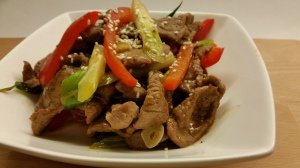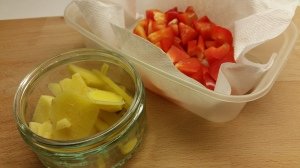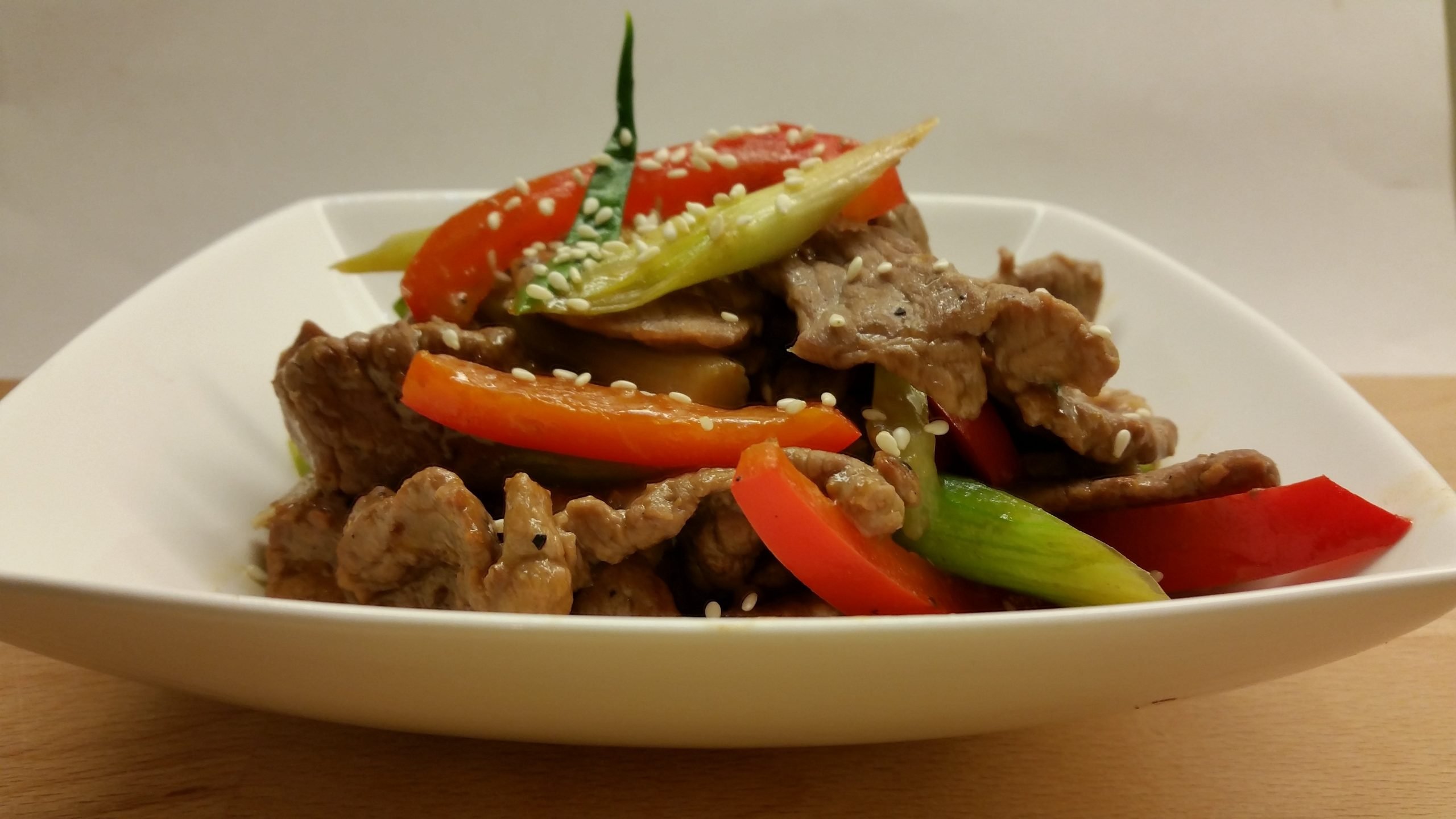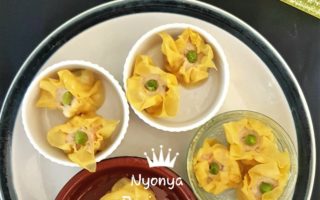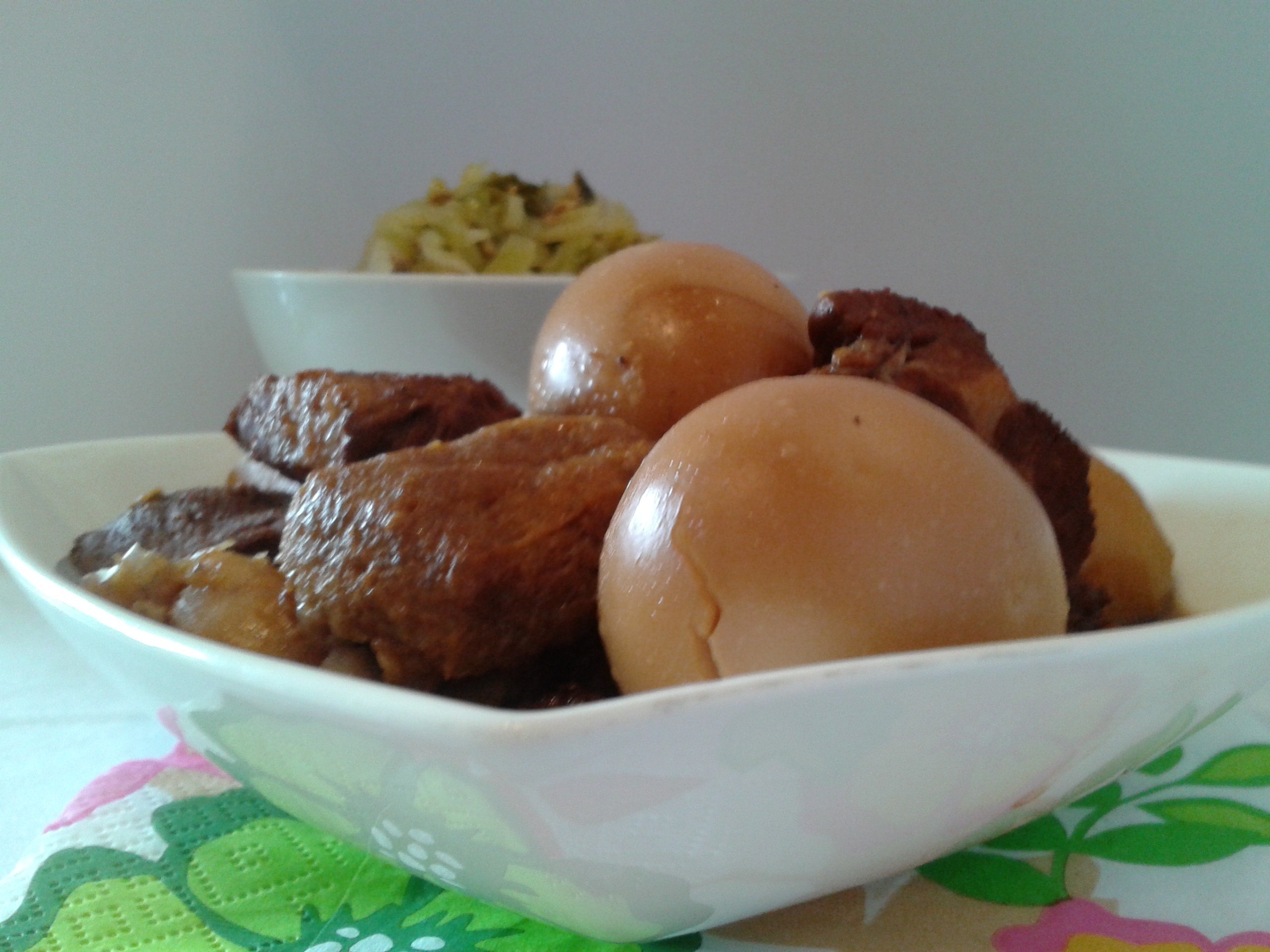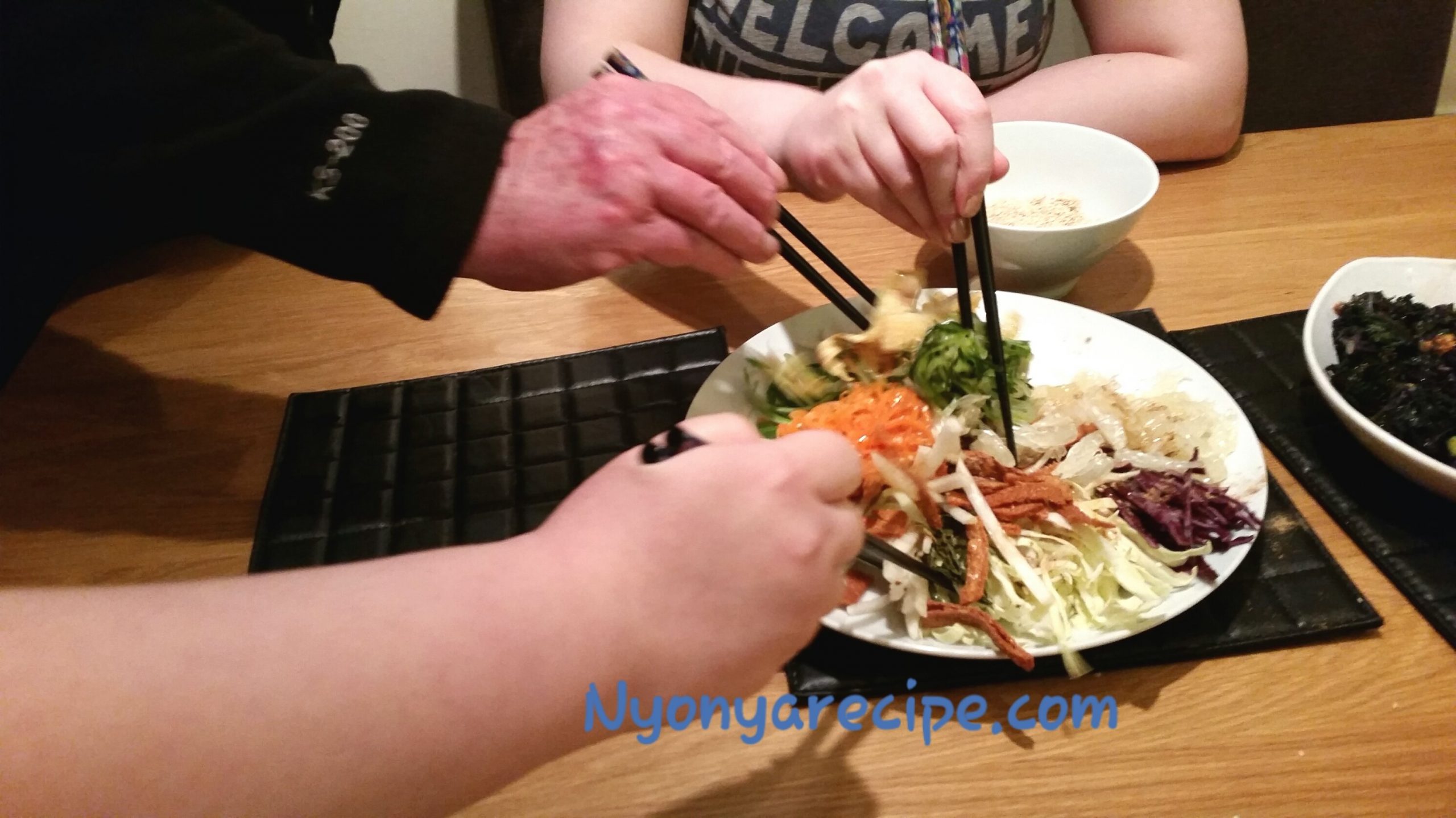Stir Fried Lamb with Preserved Soy Beans
and Fresh Vegetables
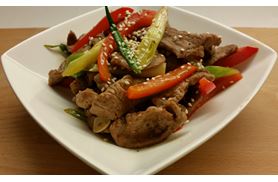
I am asked to come up with a lamb recipe for Chinese New Year since the New Year will be the year of the Ram or Sheep. Another challenge is that the recipe has to carry the Love Food Hate Waste message. So, how does one come up with a recipe with such a tall order? Since I do not have left-over lamb, I reckon that we should address other interesting food ingredients . So I decide to put the focus on one of the ingredients – Ginger.
Today’s Highlight – Ginger.
Ginger – a root spice (is it a spice?) that is commonly used in Asian and Oriental cooking. There are many types of ginger – galangal or blue ginger, cukor or kencur, torch ginger flower, and many more. a variety of ginger are used in Penang Nyonya cooking.
For the recipe today, we will just focus on ordinary ginger, the brown/beige fat knobbly root ‘vegetable’ which is commonly used in Chinese cooking.
We use chopped or sliced ginger in stir fry. Ginger is a very important component of curry paste. We used thinly julienned ginger fried in hot oil till lightly brown as topping on steamed or pan-fried fish.
For this recipe we only require about 4 to 5 cm of root ginger. To prepare ginger, you first scrap off the skin with the back of the knife or with a metal spoon. Normally, I would slice it thinly, like 1 to 2 mm thick across the grain. However, for this recipe I am cutting it into a fancy shape. To do this, I would need to cut away some odds and ends.
Do not discard the odds and ends. Collect them wrap it in cling film and freeze it for later use. This can be used for curries or be pounded as ginger pastes.
Uncut ginger lasts a few weeks if stored in a cool dry place. Another way of storing ginger is to cut it into smaller pieces and freeze them individually in a plastic bag so that you can take out a piece at a time. You only need about 2 to 3 cm piece each time. So a large finger of ginger will last a long time.
Now we can concentrate on the recipe.
There is a new ingredient which I am not sure how many of you have used it before. It is a store cupboard ingredient and it can keep for a long time.
It is preserved soy beans, or Tow Chneo (Hokkien) or Tow Cheong (Cantonese). It is a Chinese ingredient used in stews, for meat and fish. It is also used in vegetarian dishes as flavouring. It is salty and sugar is usually added to balance the saltiness. Different brands of preserved soy have different amount of salt, so you really need to taste your cooking.
You can get it in bottles or tins. I prefer the bottled ones as it is easier to store. You can get it ready mashed or the ones that you have to mash it up yourself.
If you cannot find preserved soy beans, you can substitute with 2 tablespoon of Hoisin sauce. You will need to decrease the amount sugar.
BTW, the colours of this dish are auspicious: Red means ‘Ong’ or good luck and the greens from the spring onions signify growth or freshness or spring, life. According to the Chinese, The first day of Chinese New Year heralds the first day of Spring.
So here is the recipe.
Quick Info
Serves: 6-8 with accompaniments (4 as a main- western style)
Difficulty: moderate
Cost: ££
Time: 10 mins to prep, 10 mins to cook
Ingredients
500g Lamb leg steak – all visible fat removed and thinly sliced across the grain
Marinade ingredients:
2 Tbsp Light soy sauce
1 Tsp Sesame oil
1 Tsp Corn flour
1 Tsp Szechuan pepper powder
1 Tsp Black pepper powder
I Tbsp Preserved Soy Bean – mashed with the back of the knife or in a pestle and mortar. (or 2 Tbsp of Hoisin Sauce)
1 medium Red pepper – sliced about 1 cm thick
1 bunch Or about 6-7 stalks of spring onions, sliced 3cm lengths on the diagonal
5 cm Ginger sliced into fancy shape, 1-2mm thick across the grain
3 cloves Fat garlic – sliced thinly across.
1-2 Tsp Sugar
1 Tsp Corn flour mixed with 2 Tbsp of water
2 Tbsp Chinese cooking wine
Cooking oil
Hot water
Toasted Sesame seeds for garnishing
Salt, black pepper, and sugar to taste
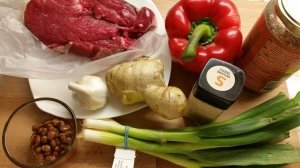
Method
- Mix the sliced lamb with the marinade ingredients except the corn flour. Mix thoroughly and then sprinkle with the corn flour. Mix well so that each piece is coated.
- Set aside.
- Prepare the other ingredients and vegetables. Do not discard the odd and ends of the pepper and ginger. You can use odds and ends of the pepper for an omelette, or fried rice.
- In a non-stick wok or frying pan, spray with low-calorie cooking spray or heat 1 tsp of cooking oil. Heat over medium heat. When the wok is hot, add the lamb. Spread out in a single and make sure the slices are open up flat and not clumped together.
- Leave it to fry for about ½ minute and until lightly browned. Turn and cook the other side. Once done, remove and set aside. You will need to do this in 2 or 3 batches.
- Rinse out the wok. Heat 1 tsp of oil (or spray) and add in the ginger and garlic and toss until it colours.
- Add in the soy bean paste and stir for a minute or two making sure that it does not burn. Deglaze with the cooking wine.
- Add in the peppers, toss, and add in the whites of the spring onion. Toss for about ½ minutes and add in the lamb.
- Toss and add in about 100 ml of hot water and bring it to a boil. Season with more black pepper, salt and sugar if required. Add in the greens of the spring onion.
- Once you are happy with the taste, add the corn starch to thicken.
- Dish out and garnish with toasted sesame seeds.
- Serve with other accompaniments and rice.

